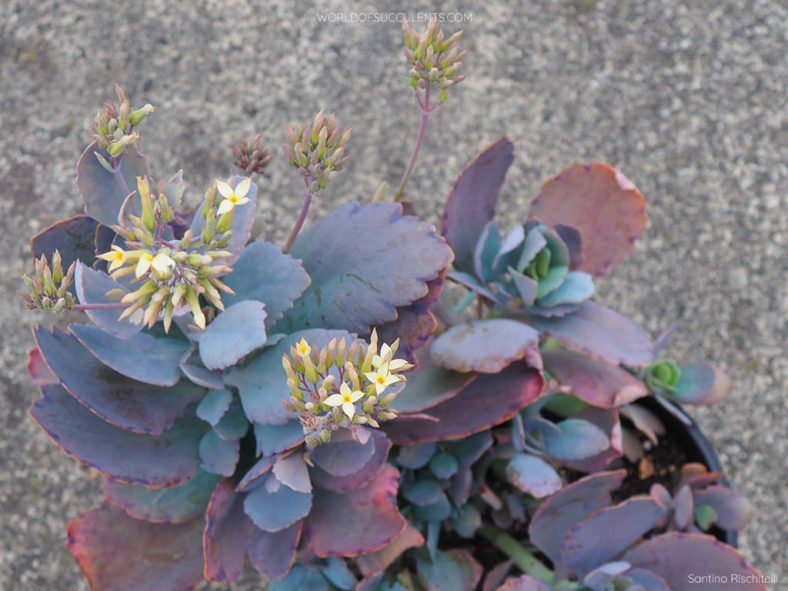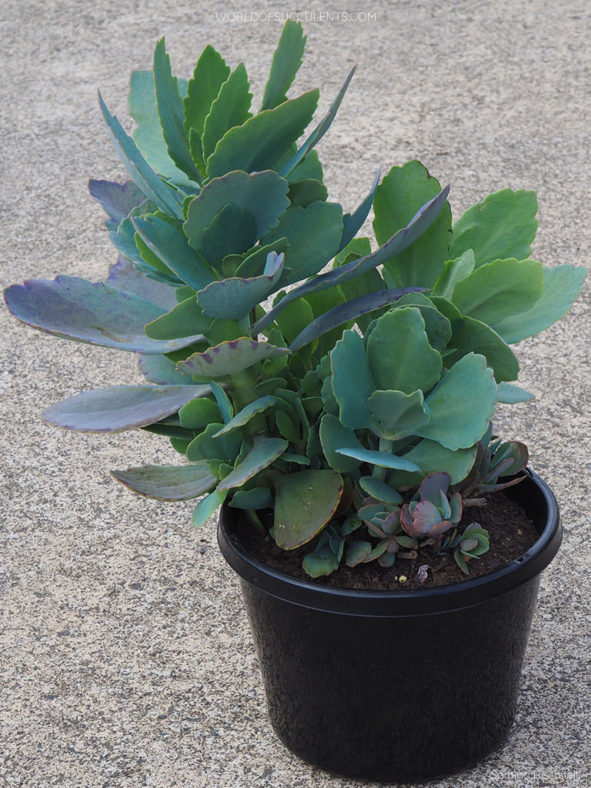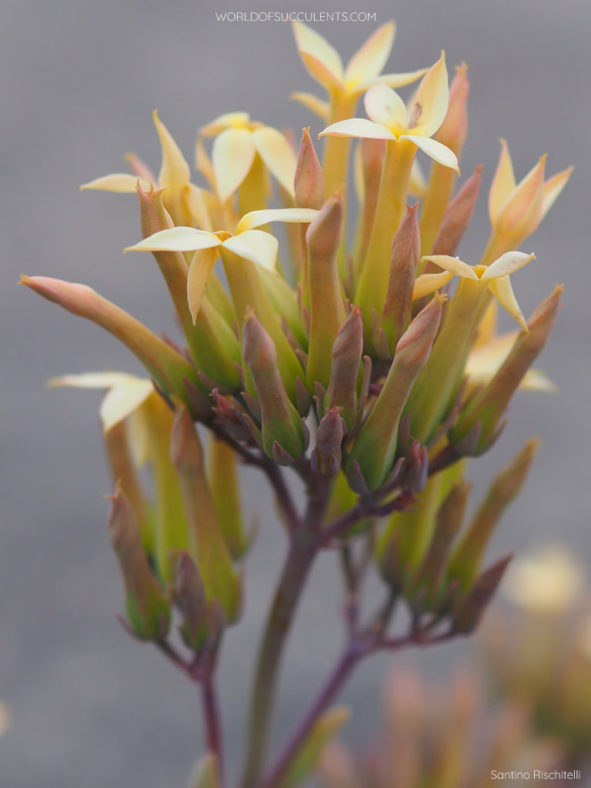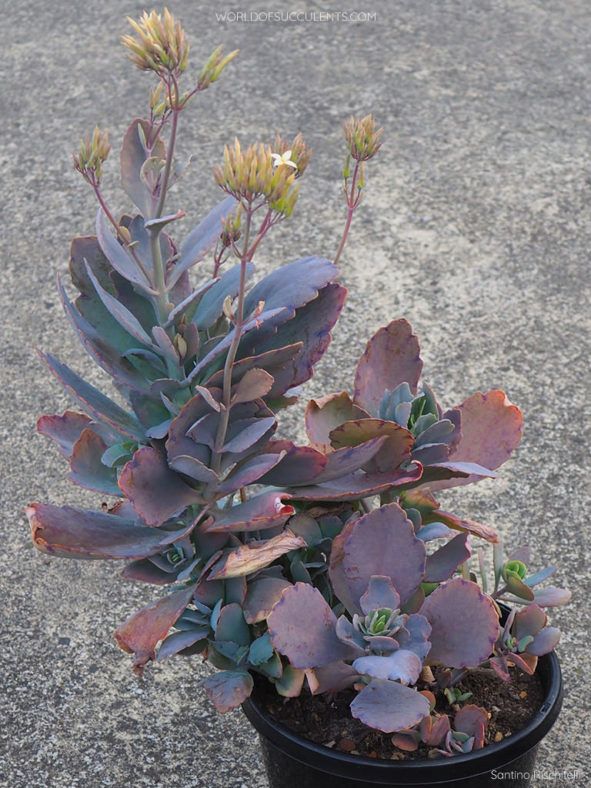Scientific Name
Kalanchoe prittwitzii Engl.
Synonym(s)
Kalanchoe dielsii, Kalanchoe lugardii, Kalanchoe robynsiana, Kalanchoe secunda
Scientific Classification
Family: Crassulaceae
Subfamily: Sedoideae
Tribe: Kalanchoeae
Genus: Kalanchoe
Etymology
The specific epithet "prittwitzii (pronounced prit-TWITZ-ee-eye)" possibly honors Georg von Prittwitz und Gaffron (1861-1936), a German officer and explorer in Africa.
Origin
Kalanchoe prittwitzii is native to Central Africa, East Africa, Sudan, Ethiopia, and Somalia. It grows at forest margins, open bush, and grasslands on stony ground or rocky slopes at elevations ranging from 1,480 to 7,220 (450 to 2,200 m).
Description
Kalanchoe prittwitzii is a succulent plant with erect or basally decumbent stems and glaucous or somewhat glaucous leaves, variable in shape and sometimes with maroon or purple spots near the margins on their underside. It can grow up to 7.5 feet (2.3 m) tall. The fleshy, stalked leaves are ovate, oblong, or obovate, sometimes 3-lobed or 3-foliate, and have irregularly serrated to scalloped or subentire margins. They can measure up to 10 inches (25 cm) long and 5.2 inches (13 cm) wide. The petiole is flat, mostly grooved above, and can reach a length of up to 1 inch (2.5 cm).
The flowers are erect, tubular, whitish-green or yellowish-green to cream with a yellow throat or yellow, rarely yellowish-pink, and appear in many-flowered clusters on stalks that can grow up to 14 inches (35 cm) tall in spring.

How to Grow and Care for Kalanchoe prittwitzii
Light: K. prittwitzii grows best in full sun but usually appreciates some partial shade in the heat of the day. Indoors, place your plant near a window that receives indirect sunlight. It will stretch if it does not have enough light.
Soil: Like most succulents, K. prittwitzii does not like "wet feet" and needs well-draining soil. Commercial potting mixes for succulent plants will work fine.
Temperature: This plant thrives in heat and humidity but is intolerant to frost. K. prittwitzii can withstand temperatures as low as 30 °F (-1.1 °C). USDA Plant Hardiness Zones 10a to 11b, 30 to 50 °F (-1.1 to 10 °C).
Watering: Water thoroughly from spring to fall, but let the soil dry between waterings, as overwatering may cause stem rot. Reduce watering during the winter months. Water your plant just enough to prevent the leaves from shriveling.
Fertilizing: K. prittwitzii benefits from occasional fertilizing during the growing season. Use a balanced fertilizer diluted to half or quarter strength applied every two weeks.
Repotting: This plant thrives better when frequently repotted, as this encourages new growth and health. For optimum growth, repot them every two years in spring. Go up one pot size every time you repot.
Propagation: K. prittwitzii is easy to propagate by seeds, offsets, or leaf and stem cuttings. Spring is the best time to take cuttings and separate offsets. Sow the seeds in spring or summer.
Learn more at How to Grow and Care for Kalanchoe.
Toxicity of Kalanchoe prittwitzii
If consumed, K. prittwitzii is not toxic to people but should be kept away from pets because it may cause vomiting, diarrhea, and heart arrhythmias.
Links
- Back to genus Kalanchoe
- Succupedia: Browse succulents by Scientific Name, Common Name, Genus, Family, USDA Hardiness Zone, Origin, or cacti by Genus
Photo Gallery
Click on a photo to see a larger version.


